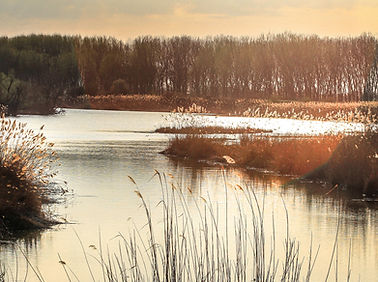
Waterfowl Conservation
Covering portions of 7 southern states, the Mississippi Alluvial Valley (MAV) contains critical overwintering habitat for waterfowl. Historically, the MAV was predominately hardwood forest, however, nearly 80% of the forested landscape has been cleared for flood control and conversion to agricultural and urbanized lands. This land use change has greatly modified regional hydrology, and subsequently influenced waterfowl resource use making waterfowl research in the region of utmost importance. Here we are working on several projects to help with waterfowl management and conservation.

01

Understanding waterfowl needs in National Forest lands comprised of bottomland hardwoods
Work in the Delta National Forest, Mississippi has examined waterfowl species presence and abundance in bottomland hardwoods and how that relates to flooding, cover, and disturbance management. This work, published in SEAFWA, has implications for how national forest lands are managed.
02
Mallard - Black Duck resource competition
American black ducks are declining in traditionally important black duck wintering areas in the south-central Mississippi flyway. At the same time morphologically similar mallards are dispersing into these areas. Work at the Tennessee National Wildlife Refuge (which is MAV adjacent) tested the idea that black duck and mallard space use, habitat requirements, and niche breadths overlap significantly (now published in JWFM).

(C) Cornell Lab of Ornithology
03

Not all landscapes are equal: understanding mallard energetic landscapes within the MAV
Waterfowl management in the MAV is typically conducted using information on Duck Energy Days which allows managers to estimate potential landscape carrying capacity and manage for a target waterfowl population. We examined the relationship between mallard space use and available landscape DEDs and test the idea that not all mallards may have access to the energy they need on wintering grounds. This work has implications on the way we manage large landscapes. (published in Wildfowl)
04
Waterfowl use of conservation program wetlands
Since the late 1980s, investments into incentivized conservation programs have helped reestablish wetlands on private lands in the MAV but there is need to understand how waterfowl use these lands, both during and outside the hunting season. We show that mallard use of various wetland types (i.e., public, conservation and private wetlands) differs in and out of the hunting season and we advocate for ways in which conservation lands can be augmented to attract waterfowl (can be found published in Wildlife Biology).


05
Long term trends in waterfowl abundance
Waterfowl populations vary due to a variety of natural and anthropogenic based factors, but it is not clear how these culminate in population trends over the long-term. Using a long term aerial survey dataset, we are looking at trends in waterfowl abundance are changing.
06
Common Goldeneye in Alaska
Various environmental and demographic factors can influence nest site selection in cavity- nesting birds. Long-term data on nest box use along the Chena River in Alaska helped elucidate nest box habitat preferences and factors that influence nest box use including breeding population size, prior success, depredation events, and egg parasitism rates.
